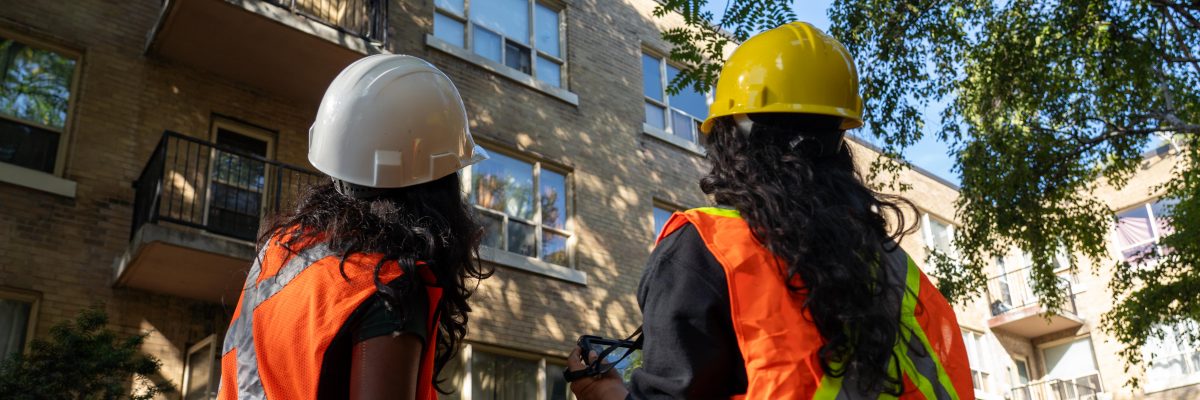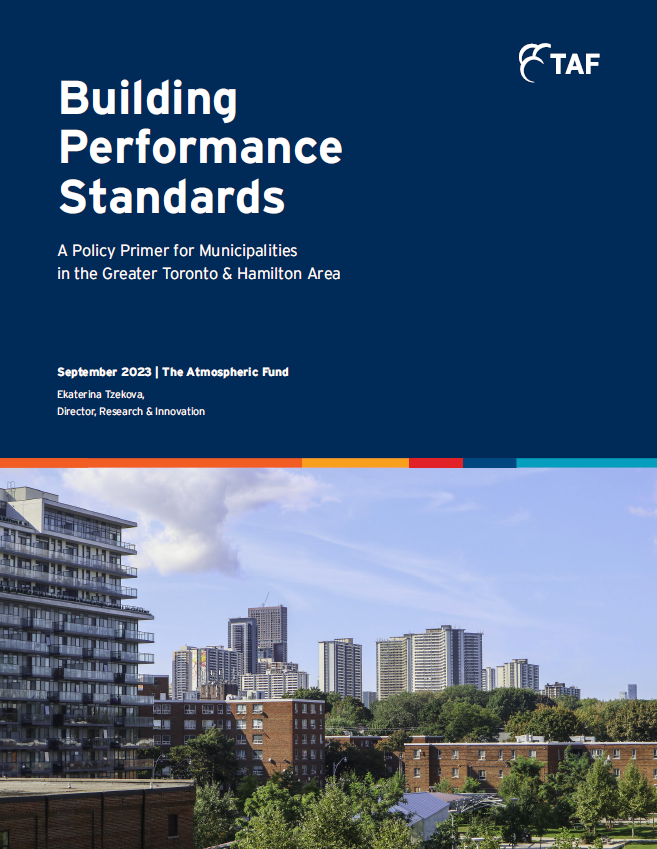TAF has worked on building retrofits with dedicated partners like Toronto Community Housing over many years, and we know how much commitment and initiative they can take. TCHC is a rare example of a portfolio owner with long-term vision, recognizing they can improve health and housing, save on costs, and reduce carbon.
At some point though, early adopters run out. Even with access to incentives, many building owners are too busy with other priorities to take advantage, and we’re left with communities full of drafty, outdated buildings that are becoming increasingly expensive to heat and cool. Our 2030 climate targets will become out of reach as emissions from buildings increase.
This is where regulation has to come in. Existing building performance has been historically challenging to regulate, but that’s changing with the recent proliferation of BPS across North America. TAF just published a new primer that reviews BPS case studies from successful jurisdictions like Vancouver and New York and explores how this policy tool can benefit municipalities in the GTHA.
How do existing building performance standards work?
Much like green development standards for new construction, BPS policies shape compliance and performance targets for existing buildings and become more stringent over time. Through building improvements, we can effectively reduce emissions, buffer against rising utility costs, improve resilience to storms, power outages and extreme heat, and create better ventilation and indoor environment. This policy mechanism has potential to address both the climate and affordability crises.
Tracking best practices across North America
Eleven jurisdictions in the U.S. have already passed BPS policies, with 27 more committed to passing similar standards soon. Best practices include early and thorough consultation with industry, prioritizing good benchmarking data, and finding effective strategies to improve housing affordability, like Boston’s Equitable Emissions Investment Fund, directing compliance revenues generated by BPS to equity-deserving communities.
The City of Vancouver was the first municipality in Canada to implement BPS, with stringent targets and a plan to provide significant incentives for building electrification in the coming years.
This fall, City of Toronto council approved development of a BPS bylaw for final council approval by the end of 2024 as part of its Long Term Financial Plan. A staff report update last month included amendments by the mayor to address equity and affordability in the transition to net-zero buildings. Funding programs, incentives, rebates, and consultation efforts will be needed to ensure that building owners, tenants, and equity-deserving groups are supported throughout this process.
Cities have the authority to implement BPS policies
Some cities have shied away from BPS due to confusion about their authority to implement such policies. We asked legal experts from the Canadian Environmental Law Association (CELA) to analyze existing legislation in Ontario and provide a legal perspective. CELA’s experts conclude that municipalities have authority to enact BPS policies. Their report includes practical supports for municipal policymakers, like a model bylaw and recommendations to integrate elements that advance social equity.
Join the conversation
To tackle some of the most pressing considerations on existing building standards, TAF convened the 2023 Dan Leckie Forum this fall. Based on discussions with municipal staff and councillors, building and financial industry professionals, and community representatives, we heard how important it to develop consistent policies, metrics, and language. Attendees emphasized that key elements of BPS, such as comprehensive performance targets, support for building owners, and safeguarding public health, must be standardized across the region. This is where multi-solving strategies – through trust building and early consultation – become critical. This not only secures the primary goal of decarbonizing our buildings, but also ensures the interests of community, government, and industry are all in alignment.
As GTHA municipalities take charge in advancing health, environmental, and economic development through mandated building policies, input from industry and the community will be critical. Cities need to work together to ensure alignment and consistency across our region. So we want to hear from you. Reach out to our policy team with your feedback, or more resources on advancing BPS in your community.
Further Reading
- TAF’s policy primer – Advancing Building Performance Standards in the GTHA
- CELA’s review of legal authorities
- Insights Uncovered from the Dan Leckie Forum
a
Header photo credit: TAF Retrofit – Nhan Ng Productions.



How does the innovative building policy approach demonstrate success, and what key elements contribute to its effectiveness? Regard Telkom University